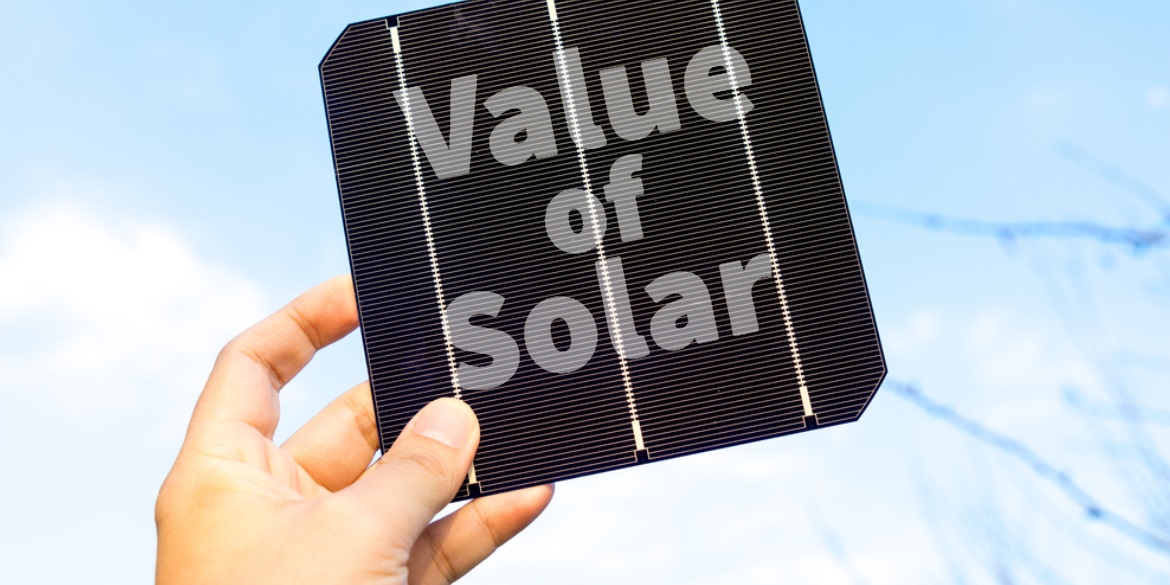Minnesota’s recently enacted Value of Solar (VOS) methodology was developed with full public vetting, including three public workshops and a review process that enabled stakeholders to actively participate and provide input. The process used to develop the policies behind the VOS methodology, and the methodology itself, have been praised for their transparency.
But why is transparency important in a process like this? Let’s look at an example related to the final publication of (hypothetical) study results.
When 9 cents equals 12 cents
In this example, we’ll compare two VOS studies conducted for a specific electric service region. Suppose ‘Study A’ determines that the value of solar (VOS) is 9 cents per kWh, and ‘Study B’ reports 12 cents per kWh. Why the difference?
Q: Is it because the two studies use different input assumptions, such as fuel prices, discount rates or the cost of capacity?
A: No, they both use the same assumptions.
Q: Is it because they include different value components? For example, maybe Study B includes environmental benefits, but Study A does not?
A: No, both include the same components.
Q: Is it a calculation error?
A: No.
Q: So, why the difference?
A: There is no difference. In this case, 9 cents equals 12 cents.
In this example, the two studies use the same assumptions, the same methods, and present exactly the same results, but in different economic terms: one reports first-year value, and the other reports levelized value. The difference is illustrated in Figure 1.

The red curve shows the year-by-year VOS. The 2014 VOS is calculated to be 9 cents per kWh, and each year it increases due to inflation (increasing labor costs, fuel costs, etc.). This same value stream can be converted to an economically equivalent series of constant prices (blue line)—in this case 12 cents per kWh.
When these two pricing streams are applied to each year’s energy, the dollar values of these two streams are equal. In other words, they have the same net present value1.
Communicating study framework
The purpose of Study A was to calculate the VOS for 2014, and the result was the single value of nine cents per kWh. For each future year, the study could be repeated using up-to-date information. Or, a long term annually-adjusted pricing schedule (red curve) could be published in advance using forecasted long-term avoided costs. Publishing a long-term pricing schedule would reduce uncertainty to PV investors. Both of these approaches seek the same objective: estimating the actual year-by-year value of PV generation.
Study B, on the other hand, presents a long-term, levelized value. While it represents the same overall value as the year-by-year schedule from Study A, the pricing in Study B is constant each year, analogous to the pricing schedule of a fixed rate mortgage. Such levelized values are simpler to discuss because there is only a single, unchanging numerical result. Note that levelizing by nature implies a long-term evaluation.
The decision on which pricing structure to go with is a policy decision—once the approach is determined, the appropriate methodology can be applied.
So back to the question: which is correct, 9 cents or 12 cents? Each is correct depending upon the framework of the study. There are advantages and disadvantages of each approach, and these should be considered and established up front in any study. A levelized rate is simpler, for example, but a year-to-year schedule may reduce pricing variance for new participants as they come on line in future years.
Whatever the approach, the study results should clearly describe the meaning of the economic results.
The case for transparency
Clean Power Research has a long history analyzing the economics of distributed solar power. Some of our projects have enabled utilities to assess PV as a new type of resource on their system. Some have informed policy decisions. Some have quantified non-traditional benefits of solar generation. Some have set VOS rates for compensating customer PV generation. Our clients have included utilities, energy agencies, and renewable organizations.
In nearly every project, we have found that taking the time to clearly frame the study objectives up front—i.e., to ensure that the key ‘policy’ decisions that will guide the study are made—helps avoid misunderstanding among stakeholders. Such as confusing 9 cents and 12 cents, when they are really the same thing.
1These curves assume a 5 percent discount rate and a 2.5% percent inflation rate.
